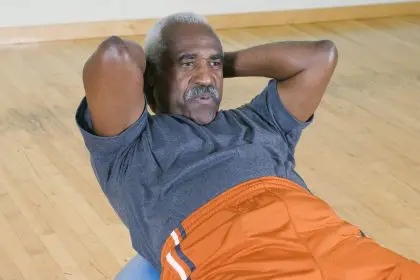
You’ve been contemplating and putting it off for years. You were worried about being flexible enough or whether it would interfere with your beliefs. You weren’t sure if it would actually help your particular issue but everyone, even your doctor, is recommending you try it. You did your research, you’ve thought long and hard about making the choice and now you’ve finally decided to do it. You set your New Year’s resolution to start practicing yoga.
Congratulations. You’ve made the right choice for your future health. It can be challenging to start a new healthy routine, especially when we are trying to balance all of the pressures of life. But rest assured that this decision has the power to completely change your life for the better.
Now maybe you’ve gone even further and you’ve finally chosen a yoga studio, DVD or some other online yoga routine at home. Or perhaps you’ve already tried a class or two or started your practice at home. Whether you are about to start practicing or have just begun your yoga journey, here are five tips that can help you on your new chosen path.
- Start your practice with a quiet meditation and intention – If you are going to a yoga class, be on time. There is usually a quiet 5-10 minute, meditative centering practice that takes place at the beginning of the class. If you are late to class, you might miss this important part of the practice. We take the time to breathe and center ourselves and set an intention in the beginning of class to bring focus and awareness to our body during our practice. If you are practicing from home and following a yoga routine online or a DVD and it has a quiet time in the beginning of the routine, do not skip over it. If your routine does not have it, take 5-10 minutes before your routine to set an intention for your practice and to sit quietly taking time to focus on your breath and your awareness in the room.
- Breathe – Don’t forget to breathe. It sounds strange, like, how can someone forget to breath? Yet it happens all the time in yoga. We become so involved with trying to get into a pose or stretch further that we forget to focus on and control our breath. In yoga we use pranayama-breathing techniques to bring awareness to the breath, which brings the mind into present moment awareness allowing you to get the most out of your practice by becoming more aware of your stretch and postures. A simple technique is to control your breath by breathing in and out of your nose, inhaling and exhaling with each movement during your practice.
- Always warm up – Just because yoga itself involves a lot of stretching, that doesn’t mean you don’t have to start with some good warm-up stretches. It’s important to give our bodies time to warm up before we go into the deeper stretching and strengthening that generally comes towards the middle of the routine. Again, the warm-up stretching usually occurs at the beginning of class but if you are practicing at home and it’s not included in the routine you chose, add in another 10 minutes of warm-up stretches before you begin. If you aren’t sure what warm-ups to do, try checking YouTube for instructional videos.
- Pay attention to your body – Listen to what your body tells you. Yoga is an introspective practice. We bring awareness to every part of our bodies through allowing our bodies to gently move and flow with our breath. If your body is telling you that something is too much, listen and take it easy. Yoga is not a competitive sport; it is an ongoing process of self-reflection and growth. Be gentle with yourself. If you are going to a class, try not to watch what others are doing and don’t worry about how you look. Focus on yourself, your breath, and your intentions for your practice.
- Don’t skip Savasana – Perhaps one of the most important (and possibly most difficult) parts of the practice is Savasana aka the corpse pose. Many people are tempted to leave a yoga class just before the end or turn off the DVD, skipping Savasana because they don’t think it will matter. However, the relaxation at the end of the class is just as important as all the poses throughout the class. Although we look like we are napping in Savasana, we are actually taking the time to relax the body and mind allowing stress and tension to dissolve away. Close your eyes and relax for 5-10 minutes, you’ve earned it! And don’t forget to breath.
Shawn C. Parker is a yoga enthusiast and tech geek based in Southern California. She believes in and has experienced the power of yoga firsthand. She is currently working on an online yoga studio called YogaCam™ to help spread the benefits of yoga globally. She has also created the first in a series of instructional yoga eBooks, which can be found on iBooks for OSX and iOS platforms.
Instagram: YogaCam
Twitter: @YogaCam
SnapChat: YogaCam
















